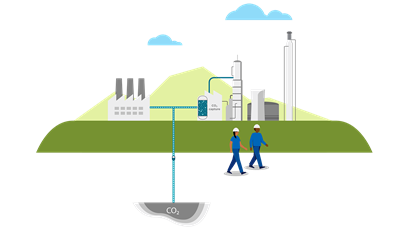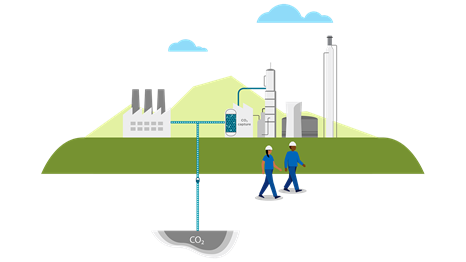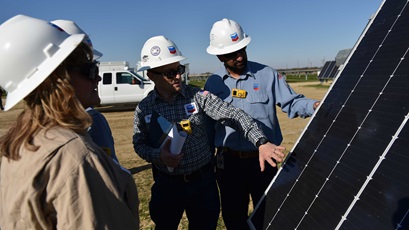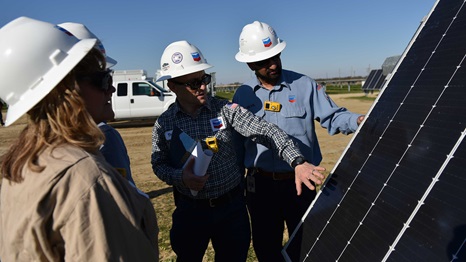emissions solutions
US upstream operations reduce carbon intensity
2 min read | may 19, 2022
Chevron’s upstream operations have been working to lower carbon intensity to support our net zero aspiration, aligning with rising social, political and stakeholder expectations.
what our people are saying
- Investment and project implementation to reduce methane emissions and flaring and improve energy management.
- A forward-thinking mindset on how we design, plan and operate our facilities, test and deploy technology and partner across sectors to drive progress.
methane management
Innovative facility design and operational practices are some of the most effective ways to reduce methane emissions. In 2020, Chevron’s U.S. onshore production methane intensity was 85% lower than the U.S. industry average.
- We have built centralized facilities in the Permian and removed certain components where emissions can occur in the DJ Basin to reduce surface footprint and improve air quality.
- We’re expanding our methane detection capabilities beyond ground sensors by deploying airborne sensors in aircrafts and drones to achieve broader coverage.
- We believe further reductions are possible in the industry through partnerships, best-practice sharing and well-designed regulation.
flaring reduction
We are lowering the carbon intensity of our worldwide operations by reducing flaring; we try to avoid it unless necessary for safety and operational purposes.
- Our U.S. upstream onshore facilities operate with the aim of preventing the need for routine flaring.
- We consider gas-takeaway availability in our planning process and only put wells on production in the Permian when there is a solution for the associated gas.
We remain a leader in minimizing flaring in the Permian Basin.
- According to Rystad Energy, the largest 40 operators in the basin flared an average of 1.8% of natural gas produced in 2021. Chevron flared 0.4%, the fourth lowest of any producer.
energy evolution
We are changing the way we consume energy across Chevron’s U.S. upstream operations by:
- Using electric or lower carbon fuel sources to power drilling and completions activities, optimizing transportation and logistics and designing office buildings to be more energy efficient.
- Tapping into renewable electricity from wind and solar offers the most reliable, scalable, cost-efficient way of powering operations. It directly supports our core business, and in the U.S. we have invested in projects where this is commercially and geographically feasible.
staying adaptable
We’ve converted most of our Permian operations to direct electric, natural gas or dual-fuel power.
- Each of these technologies can reduce the direct and indirect emissions associated with our operations and lower the overall life cycle carbon intensity of our products.
All of these efforts show how we are powering the world in an efficient, economical and responsible way.
steve green
president, north america exploration and production
topics covered
related content
-

 explainer: what do we mean by hard-to-abate industries?
explainer: what do we mean by hard-to-abate industries?emissions solutionsmay 03, 2024
-

 laying the foundation to realize carbon capture’s potential
laying the foundation to realize carbon capture’s potentialemissions solutionsmarch 27, 2024
-

 hydrogen facility to be a chevron first
hydrogen facility to be a chevron firstour operationsfebruary 29, 2024
-

 supply chains are part of the evolution in energy
supply chains are part of the evolution in energyemissions solutionsjanuary 11, 2024
chevron email updates
Subscribe to our newsletter to receive news and updates.




